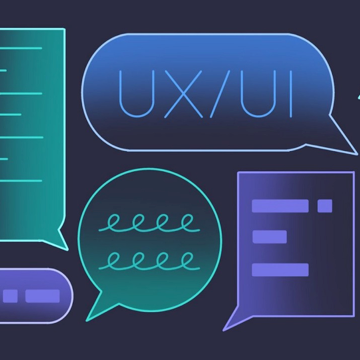“Design Thinking is a Human-Centered approach to Innovation.”
Innovation is the key to progress and paves the way for success. The major aspect related to innovation is to continue to maintain it with desirable and effective actions to gain an upper hand in this competitive world.
And businesses, in order to advance their position in respective markets, have a lot of pressure to drive innovation via their digital assets. When the talk is about bringing revolution and changes, design thinking cannot be neglected as it has long been considered the remedy to stagnation.

Design Thinking
Design thinking is an iterative process to understand user intent and demands, redefine the occurring problems, and then create innovative solutions to prototype and test.
Originally, the concept erupted as a way of teaching engineers to creatively approach problems and conflicts the way designers do.
It has evolved as a way of thinking in the field of science and design engineering, keeping a laser focus on a few key areas that prove most useful to treat issues that are unknown or ill-defined.
- Empathize
- Define
- Ideate
- Prototype
- Test
“Design Thinking is an ideology that seeks to solve complex problems in a user-centric way.”
Why is Design Thinking So Important?
Any user experience (UX) delivered through any digital asset has an influential index related to the design. And to render the best of UX via products/services it becomes crucial to develop and refine skills to address the changing user needs and behavior.
Design thinking in the modern age is considered a valuable means to problem-solving that is conducted in a user-centric way to deliver what’s most important for the end-users.
It focuses on achieving results that are practical and deliver solutions that are technically feasible, economically viable, and desirable for the user at last.
- Desirability: something that makes sense to people and is human-centered
- Feasibility: something that is technically possible and aligns with the foreseeable future
- Viability: something sustainable that can be a part of the business model
The Design Thinking Process: Think Outside the Box
The design thinking ideology encourages engineers to adopt a designer’s mindset and approach problems from the user’s perspective, turning ideas into tangible, testable product results.
“The Outside-the-Box approach of the Design Thinking Process puts a huge emphasis on Creativity, Innovation, and User Needs.”
The Design Thinking Process initiates from building empathy and defining the complexities to prototyping and testing ideas that harness a diversity of business ideas. It isn’t a process designed only for designers, instead, all teams can use and benefit from this significant ideology.
Design Thinking as a Five-Stage Process
#Empathize: Research your User’s Need
In this stage, you need to take an empathetic understanding of the complex problems that you are facing and trying to solve through user research.
Gaining knowledge over user’s desires and intents empathetically allows you to set aside assumptions and jump onto the real insights into users’ needs.
#Define: State User’s Needs and Problems
This stage of the design thinking process involves accumulating data from the previous stage and then analyzing and synthesizing it to define the core problems identified by the team.
Here you generally sense and explain the problem statements and may also create personas to keep your efforts human-oriented and targeted.
#Ideate: Challenge Assumptions and Create Ideas
This is a crucial step that allows you to cross boundaries and limits to bring some exceptional ideas curated from the solid background of knowledge from the first two phases.
Think out of the box, look towards the problems from a 360° perspective, and identify innovative solutions to eliminate conflicts and issues. Brainstorming is what is actually needed here.
#Prototype: Start to Create Solutions
The prototyping stage in the design thinking process is meant to experiment with ways to get innovative and best possible solutions to the accounted problems.
Teams can build or produce inexpensive dummy or scaled-down versions (prototypes) of the products that may not be affected largely with iterations or modifications made on specific features or functionality of the product.
Investigate and experiment with the ideas generated to solve complexities via developing prototypes. This can involve paper prototyping as well.
#Test: Try your Solutions Out
Testing the prototype solutions is rigorously done by evaluators at this stage. The results of testing can be used further to resolve problems.
This is the final stage but the entire process is iterative, so one can get back to the previous stages to make alterations and refinements to drive some alternate solutions.
These stages contribute differently to the entire design project where they are not necessarily considered as sequential steps. But are crucial enough to gain the deepest understanding of the user’s requirements and how their ideal product would be.
Design Thinking is Valuable!
The uniqueness of design thinking lies in the fact that it addresses different kinds of highly complex and wicked problems using ideal methods and approaches, keeping user’s needs at the center.
problems occur everywhere and become hurdles in the way of achieving substantial business growth. But there are some effective ways to rule out all sorts of business problems an actionable approach.
Leveraging design thinking and fostering creativity, innovation, and user-centricity, we help you scale up your business development procedures by offering a myriad of IT Services (like mobile app development, web app development, IT security services, remote staffing, etc) that are customizable and deliver compelling user experiences.








